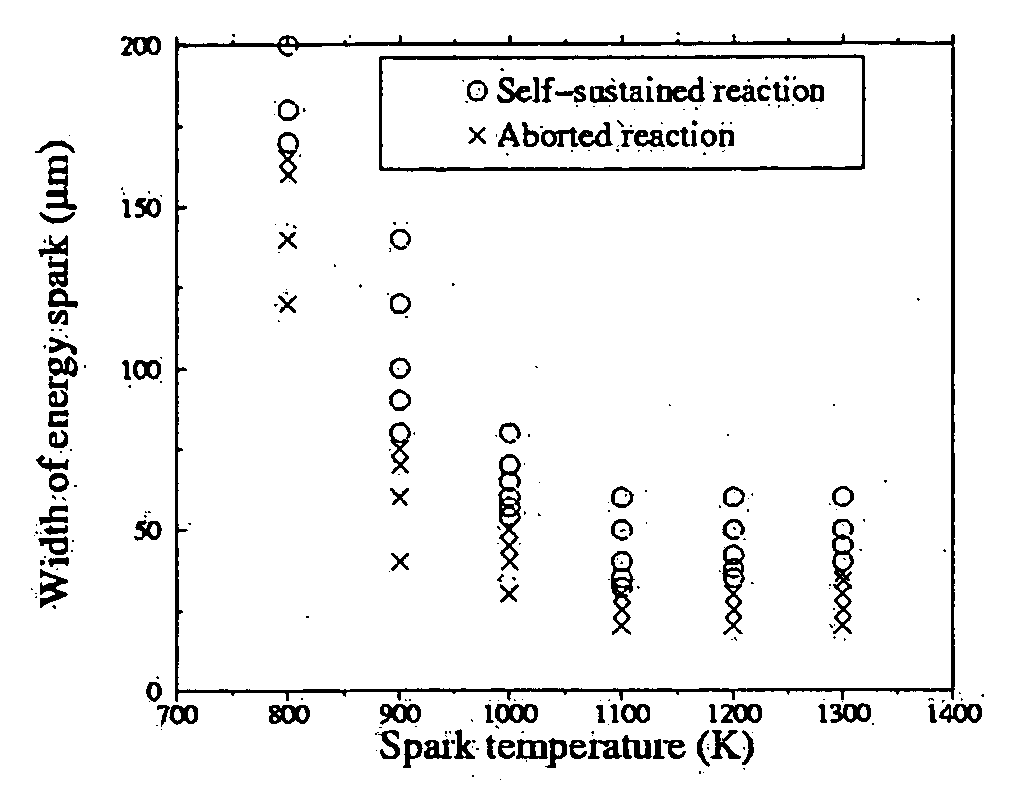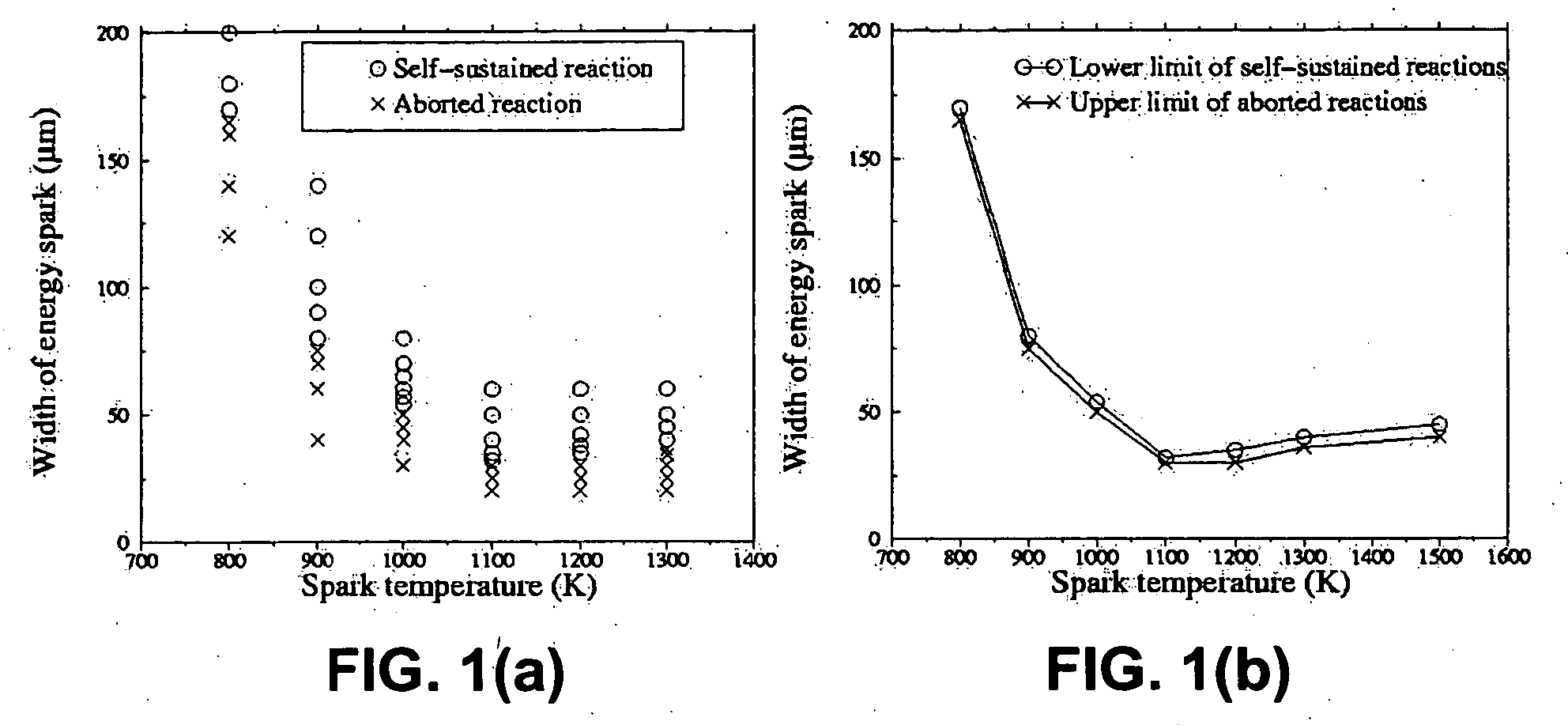Methods of controlling multilayer foil ignition
- Summary
- Abstract
- Description
- Claims
- Application Information
AI Technical Summary
Benefits of technology
Problems solved by technology
Method used
Image
Examples
Embodiment Construction
[0003] 1. Field of the Invention
[0004] Embodiments of the invention include a method of simulating an ignition of a reactive multilayer foil. Other embodiments include various methods of igniting a reactive multilayer foil by transferring energy from an energy source to a reactive multilayer foil.
[0005] 2. Background of the Invention
[0006] Reactive multilayer foils are nanostructured materials typically fabricated by vapor depositing hundreds of nanoscale layers that alternate between elements with large, negative heats of mixing such as Ni and Al. These ignitable materials support self-propagating reactions (e.g., chemical transformations) that travel along the foils at speeds ranging from about 1 m / s to about 30 m / s. Various implementations of these materials and related methods are disclosed in the following, the entirety of all of which are incorporated herein by reference: U.S. Pat. Nos. 5,381,944, 5,538,795, 5,547,715, and 6,534,194; U.S. patent application Ser. No. 09 / 846,...
PUM
| Property | Measurement | Unit |
|---|---|---|
| Time | aaaaa | aaaaa |
| Power | aaaaa | aaaaa |
| Diameter | aaaaa | aaaaa |
Abstract
Description
Claims
Application Information
 Login to View More
Login to View More - R&D
- Intellectual Property
- Life Sciences
- Materials
- Tech Scout
- Unparalleled Data Quality
- Higher Quality Content
- 60% Fewer Hallucinations
Browse by: Latest US Patents, China's latest patents, Technical Efficacy Thesaurus, Application Domain, Technology Topic, Popular Technical Reports.
© 2025 PatSnap. All rights reserved.Legal|Privacy policy|Modern Slavery Act Transparency Statement|Sitemap|About US| Contact US: help@patsnap.com



